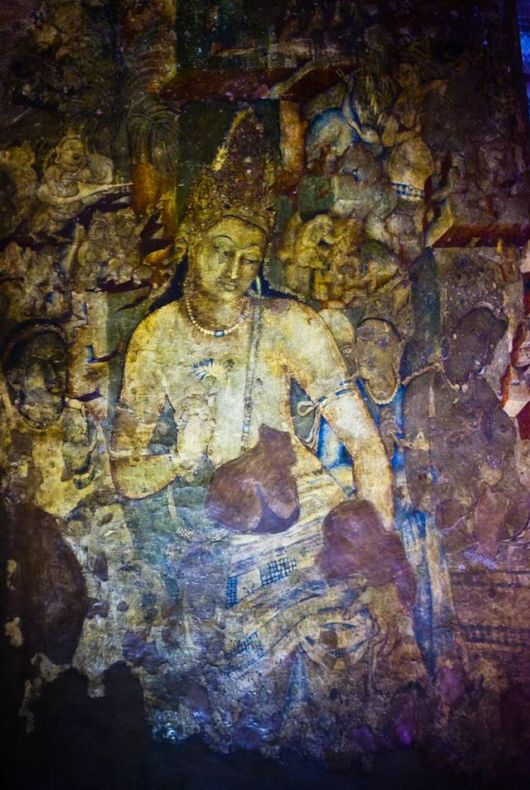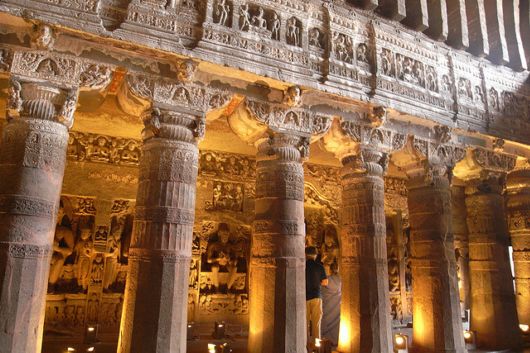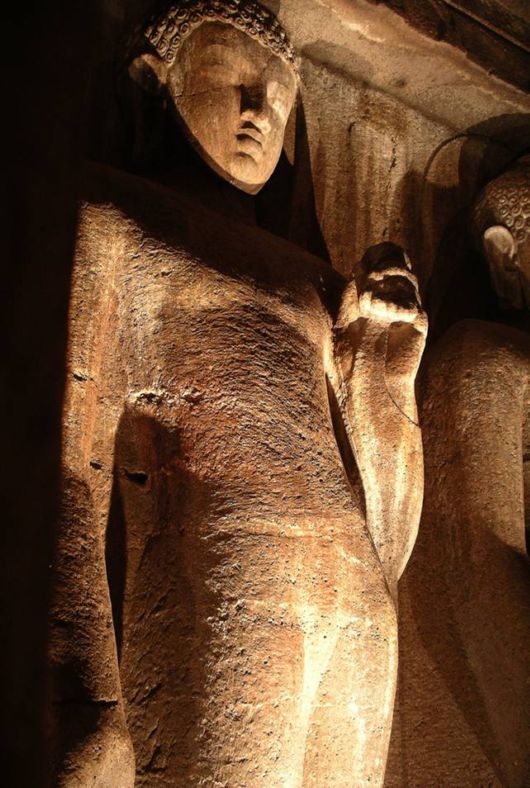|
imran
|
 |
« Reply #12 on: March 20, 2014, 05:36:09 AM » |
|
|
|
|
|
|
|
imran
|
 |
« Reply #13 on: March 20, 2014, 05:36:15 AM » |
|
|
|
|
|
|
|
imran
|
 |
« Reply #14 on: March 20, 2014, 05:36:48 AM » |
|
There are paintings everywhere – literally. Every surface apart from the floor is festooned with narrative paintings.
Time has taken a serious toll on these marvelous works with many parts simply just fragments of what they were when first created. The stories are almost wholly devoted to Jātakas – tales of the Buddha’s previous lives.
These 547 poems were painstakingly and lovingly painted on to the walls by devotees.
|
|
|
|
|
|
imran
|
 |
« Reply #15 on: March 20, 2014, 05:37:11 AM » |
|
They were created using an ancient method. The surface was chiseled so it was rough and could hold plaster which was then spread across the surface. Then the master painter would, while the plaster was still wet, commence his work.
The colors soaked in to the plaster and so became a part of the surface.
Although this meant that it would not peel off as easily, perhaps not even the painters foresaw the temples persevering for over two thousand years.
|
|
|
|
|
|
imran
|
 |
« Reply #16 on: March 20, 2014, 05:37:21 AM » |
|
|
|
|
|
|
|
imran
|
 |
« Reply #17 on: March 20, 2014, 05:37:45 AM » |
|
No one knows for sure when and why the caves were abandoned – whether it was a gradual desertion of some event of political and social magnitude took place which precipitated the neglect and final vacation of the site. Go to The NEXT Page for More Pictures >>> Go to The NEXT Page for More Pictures >>>
|
|
|
|
|
|
 INFORMATION CLUB
INFORMATION CLUB Informative Zone
Informative Zone Places
Places Ajanta Caves: Your History Lesson For Today
Ajanta Caves: Your History Lesson For Today INFORMATION CLUB
INFORMATION CLUB Informative Zone
Informative Zone Places
Places Ajanta Caves: Your History Lesson For Today
Ajanta Caves: Your History Lesson For Today
